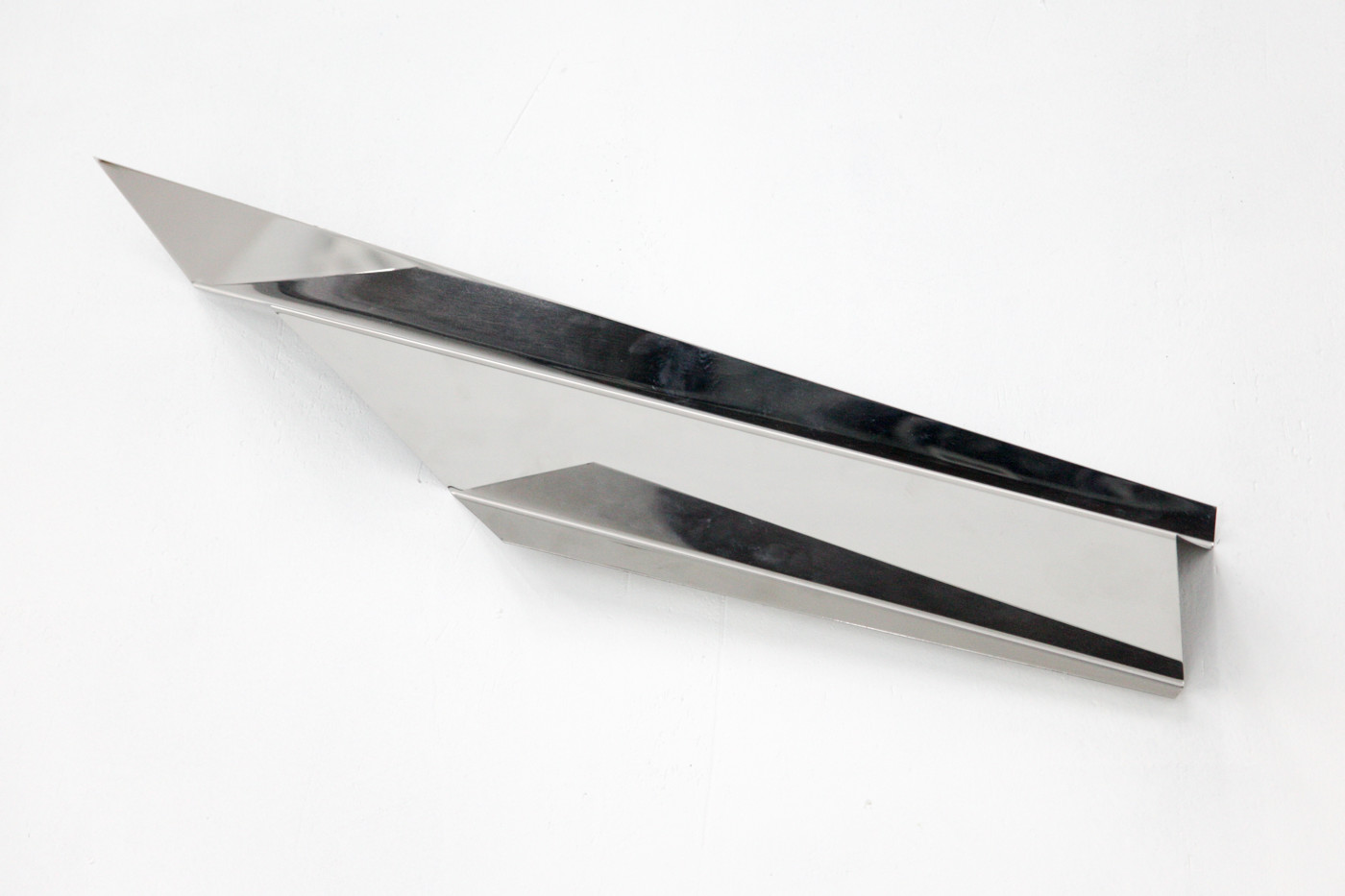When Air becomes Breath

When Air becomes Breath
Exposition view I
2016

Being human being
2016
White neon, nylon wire
Dimension variable

The Tree
2016
photographs

Being human being
2016
White neon, nylon wire
Dimension variable

Untitled
2016
stainless steel

Impermanence
2016
UV direct Print on aluminium Unique
80 x 40 x 9 cm

Future fossil
2016
UV direct Print on aluminium Unique
120 × 100 × 40 cm

When Air becomes Breath
Exposition view II
2016

Untitled #2
2015
Polished steel
63 × 31 1/2 × 6 7/10 in 160 × 80 × 17 cm

Materials metter
2016
Mixed media, gem stones, steel, print on aluminum
36 1/5 × 12 1/5 × 3 9/10 in 92 × 31 × 10 cm

Untitled #IV, V
2016
Polished steel
120 × 40 × 24 cm, 110 x 30 x 23cm


Untitled #I
2016
Polished steel
35 × 7 1/10 × 5 1/2 in 89 × 18 × 14 cm

Horizon IX
2015
Direct print on aluminium, neon
70 9/10 × 27 3/5 in 180 × 70 cm


Rock sculpture (Borderlines series)
2015
Fiberglass, polished steel
65 × 65 × 50 cm

Untitled #III
2016
Polished steel
60 3/5 × 10 1/5 × 5 9/10 in 154 × 26 × 15 cm

Rock sculpture (Borderlines series)
2015
Fiberglass, polished steel
65 × 80 × 50 cm

Architecture of loss
2016
Direct print on aluminium, steel
43 3/10 × 17 7/10 × 19 7/10 in 110 × 45 × 50 cm

Inhale
2016
White neon
3 9/10 × 19 7/10 × 2 in 10 × 50 × 5 cm

Exhale
2016
White neon
3 9/10 × 19 7/10 × 2 in 10 × 50 × 5 cm
In When Air Becomes Breath Margo Trushina experiments with becoming the mediator between the world of nature that makes a human-being — and the world of objects that is made by humans. By launching a dialogue with the multilayered space of the gallery Trushina as if enters an artistic collaboration with the air inside the white cube. Consequently, the distinct ability of air flows to work as a channel for communication between an individual and the world that surrounds her turns into an artistic strategy itself. In the first room Trushina provides us with the certain points for “earthing”: the neon line of horizon remains on the familiar eye level while we are manoeuvring among the static sculptures produced in steel and stone, observe the air flows captured in photographs. The second room undergoes a radical transformation of the exposition rhythm: creatures and objects are levitating, inhabiting the vertical dimension of the space — as if seducing the viewer to join. The immersive sound installation unites the two spaces and offers an alternative experiential route to the objects on display: to pause and concentrate on the rhythm of one’s own breath.
